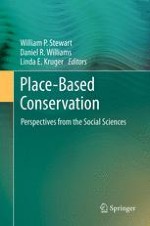2013 | OriginalPaper | Buchkapitel
13. Whose Sense of Place? A Political Ecology of Amenity Development
verfasst von : Patrick T. Hurley
Erschienen in: Place-Based Conservation
Verlag: Springer Netherlands
Aktivieren Sie unsere intelligente Suche, um passende Fachinhalte oder Patente zu finden.
Wählen Sie Textabschnitte aus um mit Künstlicher Intelligenz passenden Patente zu finden. powered by
Markieren Sie Textabschnitte, um KI-gestützt weitere passende Inhalte zu finden. powered by
